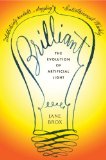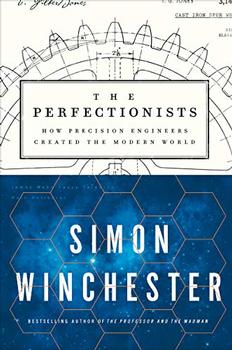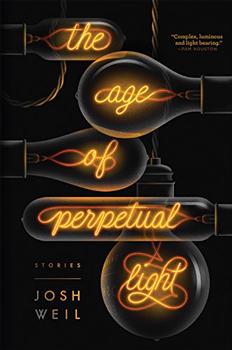Summary | Excerpt | Reviews | Beyond the book | Read-Alikes | Genres & Themes | Author Bio

The Evolution of Artificial Light
by Jane BroxBrilliant is more than an eloquent and gorgeous history of artificial light; it is a survey of profound experiences long lost to the human senses, imagination and heart. Brox reveals how light and darkness create intimacy and isolation, mark periods of rest, work and dreaming, and she demonstrates how light damages and divorces us from the natural world. All students of literature, history and art should read Brilliant; anyone interested in what it means to be human should read it, too.
Brox begins and ends her history in the dark caves of Lascaux where Ice Age people fashioned stone lamps and by these small lights painted the extraordinary horses, ibex, cats and other creatures that come alive, "out of darkness as you pass. Nothing stays still. Shadows nestle in the cavities; a flicker of light across a pale protruding rock turns a hoof or raises a head. One shape recedes as another emerges." Brox shows us how darkness is intrinsic to the cave paintings' grace and beauty, as darkness was, until recently, a necessary and companionable counterpoint to light:
"Five hundred years ago... candles and lamps no brighter than those of Roman times would have lit only a bowl of porridge, a book, a shirtsleeve in need of mending, another. If someone reached for a thread or let out a long sigh, the flame would quiver, and the shadows would quiver, too. Then everything would right itself again. For such small light was precious and meted out sparingly. For much of the evening, people lay in their houses after dousing their cooking fires, sleeping and dreaming away the hours. If by chance on a clear, moonless night they stepped out of their intimate dark and looked to the heavens, the stars would have been so many that 'one could not have put a finger between them.'"
Notable are Brox's description of the medieval curfew and practice of "divided sleep," in which people engaged in alternating phases of sleep and relaxed wakefulness through the night; the evolution of stage lighting during Shakespeare's time; the darkness of streets before the 17th century when a full moon on a clear night provided the only safety and illumination:
"The full moon also gave travelers enough light to see the outlines of the landscape and the road ahead. The eye functions differently at night than during the day. In the dark, people see with their retinal rods rather than their retinal cones, and complete adaptation to night vision takes a full hour. Even then, human sight is much less acute at night, and the eye can't distinguish color. On a night with no moon or heavy cloud cover - a lantern or torch lighting the way only directly ahead - travelers relied on their other senses."
Brox covers so much so well that I cannot list everything notable, fascinating, or beautiful in her book. But particularly wonderful are her descriptions of artificial illumination's triumphs: Edison's work at Menlo Park; Tesla and the glowing 1893 World Columbian Exhibition; the harnessing of Niagara. Brox is just as interesting and eloquent when describing artificial light's disasters: over-whaling; the black-out of 1965 when people were confused by moonlight; the failure to bring light to rural and to poor America; the politics, architecture, ecology of light as it disrupts all life on earth, including ours.
Brox takes the reader from "small light" - the color, the flicker, the smell, the invention, the construction and duration of a succession of candles and lamps - to the world of grandiose and urban illumination until she delivers the reader squinting in the harsh brightness of the 21st century world. With each chapter shadows become thinner, and the darkness of night less durable. Perhaps this evocation of the darkness lost to us is her greatest achievement, the absence of the "intimate dark" and the sweet rest it gave the weary, the dreams it conjured, and the community of people and living things it created under its vast sweep of multi-colored starlight.
![]() This review was originally published in The BookBrowse Review in September 2010, and has been updated for the
August 2011 edition.
Click here to go to this issue.
This review was originally published in The BookBrowse Review in September 2010, and has been updated for the
August 2011 edition.
Click here to go to this issue.

If you liked Brilliant, try these:

by Simon Winchester
Published 2019
The revered New York Times bestselling author traces the development of technology from the Industrial Age to the Digital Age to explore the single component crucial to advancement - precision - in a superb history that is both an homage and a warning for our future.

by Josh Weil
Published 2018
A dazzling new work that spans a century and eight tales of light, human progress, and the search for a better life from Josh Weil, one of "the most gifted writers of his generation" (Colum McCann), winner of the Sue Kaufman Prize from the American Academy of Arts and Letters
Your guide toexceptional books
BookBrowse seeks out and recommends the best in contemporary fiction and nonfiction—books that not only engage and entertain but also deepen our understanding of ourselves and the world around us.